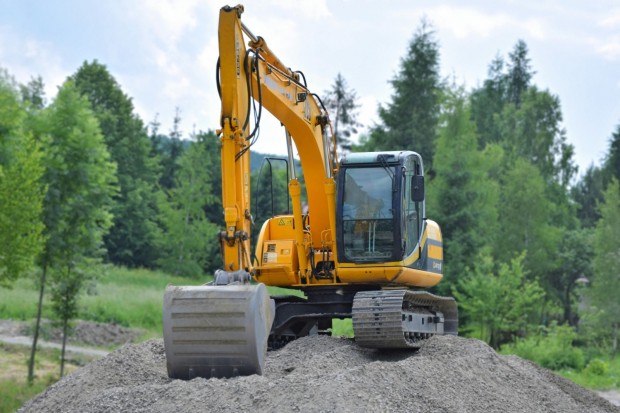A crucial stage in the preparation of a building site for construction is excavation. To create a strong basis for the construction, rocks and dirt are excavated and removed under this method.

(Photo : Pexels/ PhotoMIX Company )
1. Site Inspection and Survey
An exhaustive site assessment and survey should be carried out before beginning any excavation activity. You should reportedly evaluate the area in search of any current buildings, utilities, or other hazards. Find the site's borders as well as the slopes and soil conditions. Having this knowledge at hand will help the excavation process to be more effective in terms of both design and execution.
2. Getting Required Permits
Check with the local authorities and get any necessary clearances or permissions before starting the excavation. Depending on the size and location of the project, you might wish rights for areas such as excavation, utility connections, or environmental considerations. Nevertheless, compliance with legal obligations is ensured, and potential legal concerns are avoided when these standards are upheld.
3. Clearing the Site
Clear the area of any vegetation, trash, or other objects that might impede the excavation operation. Any trees, shrubs, rocks, or other objects that can possibly obstruct the excavation equipment or worker safety will be taken out of this operation. Accordingly, clearing the site allows one to establish a readily accessible, clean space for excavation.
4. Excavation
Every building requiring a basement requires excavation, and the removed dirt will have to be disposed of in some form. During this phase, you may expect the involvement of heavy machines like a bulldozer or backhoe in addition to dump trucks able to move fill material.
Also Read: Top Cladding Color Choices to Elevate Your Home's Exterior Appeal
5. Rough-Grading
For drainage purposes, it is possible to back-fill some of the material that was taken during the excavation process surrounding the house. This will help establish the appropriate pitch toward the curb. In order to ensure that grass and shrubs are able to flourish in the area surrounding the house, you will need to place the richer topsoil that was taken on top of the filled dirt.
6. Erosion Control
There are certain areas that have regulations that prohibit the topsoil from being eroded away by runoff from severe rains; therefore, it is possible that you will need to study the local limits that pertain to this matter. On the other hand, in any scenario, you will be required to take measures in order to prevent the dirt from being carried away from the cleared portion of land and maybe into the properties that are close to it. Once grass begins to grow on the land, this should no longer be a problem; nevertheless, until that time comes, it is necessary to take into account the impacts of erosion.
7. Quality Checks for Excavation
The recording of starting ground levels and the verification of pit dimensions are both examples of quality assurance measures that are an inherent part of the excavation and filling operations. In addition, they get approval for strata classification from the appropriate authorities, dispose of material that is not suitable, and stack material that is suitable for backfilling. Over the course of the excavation and filling activities, they ensure that the essential safety precautions are implemented. In light of this, excavation activities can be carried out effectively by sticking to these protocols and quality checks with the utmost accuracy, thereby laying the groundwork for a building project that will be successful.
Related Article: 6 Common Hazards in the Excavation Process







